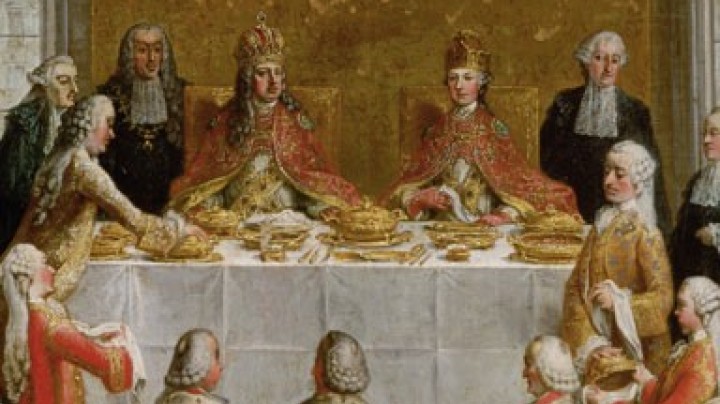The first opera at the imperial Viennese Court
From Italy a new art form arrives at the Viennese Court and becomes the dominant artwork of the Baroque age: the opera.
Still in its infancy, the opera was brought to Vienna by Empress Eleonora of Gonzaga from her native Mantua when she married Ferdinand II in 1622.
During the reign of her father Vincenzo, Mantua had become a centre of Italian art. Claudio Monteverdi, whose Orfeo, composed in 1607, was one of the very earliest operas in musical history, lived and worked at the Mantuan court.
Through Eleonora a close link was forged with Italy that was reinforced by the third wife of Ferdinand III – again from the House of Gonzaga and again called Eleonora. She fostered music and theatre as well as contemporary art in Austria. The development of court music was subsequently strongly influenced by Italy: composers and musicians were mostly from Italy, in particular from Mantua, and the Kapellmeister or composers and directors of music for the Court Chapel were almost exclusively Italian until well into the eighteenth century. The Italian opera thus became the salient art form of the Baroque age. However, a continuous operatic tradition at the Imperial Court does not emerge until the second half of the seventeenth century, as the expenditure necessitated by the Thirty Years’ War did not permit such costly and extravagant projects.
From the first half of the seventeenth century festivities at Court such as weddings, baptisms, coronations, ceremonies of hereditary homage and the name-days and birthdays of the emperor and empress were celebrated with stately and extravagant performances of opera. The first record of one taking place at the Viennese Court dates from 1625. It was held to celebrate the birthday of Ferdinand II. These early operas were performed in a large ballroom built of wood and erected on the site of the present-day Redoute ballrooms at the Hofburg in 1629-1631. Here as in several other large rooms at the Hofburg stages were constructed for performances of dancing and plays.
One of the first permanent theatres north of the Alps was built at Innsbruck in 1629/30. The Innsbruck court, whose culture looked towards Italy, exercised a considerable influence on Vienna until the Tyrolean line of the Habsburgs died out in 1665.
The coronation of Eleonora as Queen of Hungary in 1622 had been marked by the first large-scale ballet performance in Vienna in which the dancers, choreographed by the empress, had formed the letters spelling the name of her husband, Ferdinand II.























